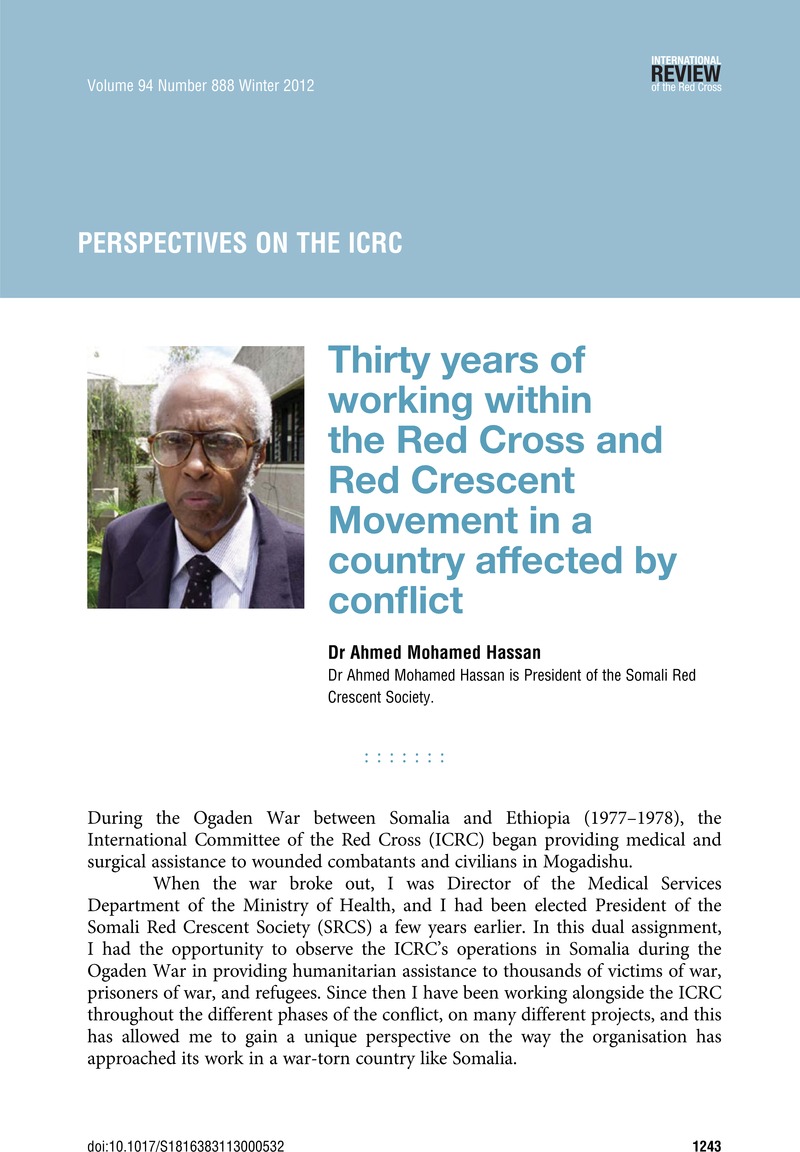Article contents
Thirty years of working within the Red Cross and Red Crescent Movement in a country affected by conflict
Published online by Cambridge University Press: 05 February 2014
Abstract

- Type
- Perspectives on the ICRC
- Information
- International Review of the Red Cross , Volume 94 , Issue 888: ICRC: 150 years of Humanitarian Action , December 2012 , pp. 1243 - 1249
- Copyright
- Copyright © International Committee of the Red Cross 2013
References
1 Editor's note: the Lokichoggio hospital, located in the Turkana district in Kenya, provided war surgery and emergency medical care for war-wounded patients from southern Sudan. The ICRC handed the hospital over to the Kenyan authorities in 2006.
2 As Sven Mollekleiv, the then Secretary-General and current President of the Norwegian Red Cross, has remarked during the conference on Somalia in Oslo in March 1995: ‘For the Norwegian Red Cross this local partner has naturally been the Somali Red Crescent Society. Without this organisation, rooted in local communities all over Somalia and Somaliand, it would have been impossible for the Red Cross Movement as a whole to succeed in one of the biggest operations ever established by the ICRC. One example which will illustrate what I am talking about: during a very critical period with many problems in food distribution, such as the question of giving every clan in a certain area rations according to their numbers and to avoid security problems related to unequal distribution, Dr Ahmed Mohamed Hassan, President of the SRCS, spent two weeks of painful negotiations with all local clans and assuring a fair and safe delivery of the food’.
3 Editor's note: the ICRC's ‘lead role’ in situations of international and non-international armed conflicts, internal strife, and their direct results is recognised in Articles 4 and 5.3 of the Agreement on the Organisation of the International Activities of the Components of the International Red Cross and Red Crescent Movement (the Seville Agreement), Seville, 25–27 November 1997.
4 Editor's note: on this point, see the publication Spared from the Spear: Traditional Somali Behaviour in Warfare, 2nd edition, ICRC and Somali Red Crescent Society, February 1998, pp. 1–3.
- 1
- Cited by


